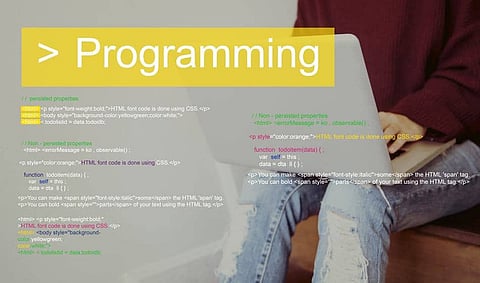

Python is one of the most popular and widely known programming languages that is a favorite in the developer community. Its advanced libraries and file extensions enable developers to build state-of-the-art tools for real-world problems, or simply design a GUI (Graphic User Interface). GUI plays an essential role in the computer world as it makes human-machine interaction easier. Python offers a diverse range of options for GUI frameworks. Some of these frameworks are more preferred by the developers to build both .apk and .exe applications. Moreover, its GUI toolkits include TK, GTK, QT, and wxWidgets, which come with more features than other platform-specific kits. Though the Python wiki on GUI programming lists on 30 cross-platform frameworks, we have selected our top 4 picks. They are:
Kivy: It an open-source Python library for the rapid development of applications that makes use of innovative user interfaces, such as multi-touch apps. This liberal MIT-licensed Kivy is based on OpenGL ES 2 and includes native multi-touch for each platform. It is an event-driven framework based around the main loop, making it very suitable for game development. It supports multiple platforms, namely, Windows, MacOSX, Linux, Android-iOS, and Raspberry Pi. Unlike QtCreator, Kivy doesn't have a visual layout program, but it uses its own design language to help you associate UI layout with code objects.
libavg: This is a third-party library, written in C++ and scripted from Python, with properties of display elements as Python variables, a full-featured event handling system, timers (setTimeout, setInterval), support for logging, and more. Like Kivy, libavg uses OpenGL and makes use of hardware acceleration. This framework is great for developing modern touch UIs and supports all major touch driver models, including Windows touch, Linux XInput, and TUIO.
PyQT: PyQT uses Python v2 and v3 bindings while implementing the popular Qt library. It is written in C++. It is the most preferred cross-platform Python bindings implementing the Qt library for the Qt (owned by Nokia) application development framework. Currently, PyQT is available for Unix/Linux, Windows, Mac OS X, and Sharp Zaurus. It combines the best of Python and Qt, and it up to the programmer to decide whether to create a program by coding or using Qt Designer to create visual dialogs. It is available in both commercials as well as with a GPL license. Also, writing Python applications around Qt means you have access to QtCreator, which features a designer mode to generate code for the layout of your application.
Tkinter: It is commonly bundled with Python, using Tk and is Python's standard GUI framework. It is open-source and available under the Python License. There is no need to install the same separately. Tkinter is a wrapper around Tcl/Tk, a popular graphical interface and language pairing first popularized in the early 90s. Further, it is helpful to those who are new to Python.
Join our WhatsApp Channel to get the latest news, exclusives and videos on WhatsApp
_____________
Disclaimer: Analytics Insight does not provide financial advice or guidance. Also note that the cryptocurrencies mentioned/listed on the website could potentially be scams, i.e. designed to induce you to invest financial resources that may be lost forever and not be recoverable once investments are made. You are responsible for conducting your own research (DYOR) before making any investments. Read more here.
